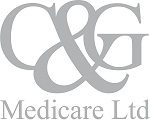Dear readers,
If you have been following the posts over the last few days, you will see I have covered a fair amount of information regarding Celiac disease. IF YOU ARE IN ANY DOUBT WHETHER YOU HAVE THIS CONDITION I URGE YOU TO SEEK MEDICAL ADVICE.
Celiac disease has no cure as yet, but you can effectively manage the disease through changing your diet.
Once gluten is removed from your diet, inflammation in your small intestine will begin to subside, usually within several weeks. If your nutritional deficiencies are severe, you may need to take vitamin and mineral supplements recommended by your doctor or dietitian to help correct these deficiencies.
Complete healing and regrowth of the villi may take several months in younger people and as long as two to three years in older people.
Improvements after starting a gluten-free diet may be especially dramatic in children. Not only do their physical symptoms improve, but also their behavior improves. In addition, their growth starts to pick up.
Avoiding gluten is essential
To manage the disease and prevent complications, it’s crucial that you avoid all foods that contain gluten. That means all foods or food ingredients made from many grains, including wheat, barley and rye. This includes any type of wheat (including farina, graham flour, semolina and durum), barley, rye, bulgur, Kamut, kasha, matzo meal, spelt and triticale.
Amaranth, buckwheat and quinoa are gluten-free as grown, but may be contaminated by other grains during harvesting and processing.Cross-contamination may also occur if gluten-free products are prepared in unwashed bowls previously containing gluten products. Oats may not be harmful for most people with celiac disease, but oat products are frequently contaminated with wheat, so it’s best to avoid oats as well.
The question of whether people eating a gluten-free diet can consume pure oat products remains a subject of scientific debate. Difficulties in identifying the precise components responsible for the immune response and the chemical differences between wheat and oats have contributed to the controversy.
Your doctor may recommend that you meet with a dietitian who can instruct you on a gluten-free diet. There are still many basic foods allowed in a gluten-free diet. These include:
- Fresh meats, fish and poultry (not breaded or marinated)
- Most dairy products
- Fruits
- Vegetables
- Rice
- Potatoes
- Gluten-free flours (rice, soy, corn, potato)
Most foods made from grains contain gluten. Avoid these foods unless they’re labeled as gluten-free or made with corn, rice, soy or other gluten-free grain:
- Breads
- Cereals
- Crackers
- Pasta
- Cookies
- Cakes and pies
- Gravies
- Sauces
Many other foods have ingredients that contain gluten. Grains containing gluten are often used in food additives, such as malt flavoring, modified food starch and others.
Other sources of gluten that might come as a surprise include medications and vitamins that use gluten as a binding agent, lipstick, postage stamps and contamination of gluten-free foods with foods containing gluten.
Gluten-free products abound
Fortunately for bread and pasta lovers with celiac disease, there are an increasing number of gluten-free products on the market. If you can’t find any at your local bakery or grocery store, check with a celiac support group or the Internet for availability. In fact, there are gluten-free substitutes for many gluten-containing foods, from brownies to beer. Many cities have specialty grocery stores that sell gluten-free foods.
What if you eat gluten?
If you accidentally eat a product that contains gluten, you may experience abdominal pain and diarrhea. Some people experience no signs or symptoms after eating gluten, but this doesn’t mean it’s not hurting them. Even trace amounts of gluten in your diet can be damaging, whether or not they cause signs or symptoms. Going on and off a gluten-free diet can lead to serious complications.
Most people with celiac disease who follow a gluten-free diet have a complete recovery. Only a small percentage of people who have severely damaged small intestines don’t improve with a gluten-free diet. When diet isn’t effective, treatment often includes medications to help control intestinal inflammation and other conditions resulting from malabsorption.
Because celiac disease can lead to many complications, people who don’t respond to dietary changes need frequent monitoring for other health conditions.
